Gladiola

Gladiolus | Gladiola, Glads, Sword Lily
Grandiflora gladioli is the classic Glad
Iridaceae (Iris Family) Pronounced Eye-reh-DAY-see-eye
Pronounced glad-ee-O-lus
Corm, although I always call them a bulb (same as Crocus)
The name "Gladius" is a Latin word for "sword," more specifically the kind of sword used by Roman foot soldiers around Bible times in 200 years BC and 200 years AD.
The leaves are long and sword-shaped in upright fans. When I compare them to my Iris leaf blades, it makes sense that this plant is in the Iris Family!
The flowers are funnel-shaped and open up one at a time from the bottom to the top.
It is said that the plant is sensitive to the earth's pull because the stems will curve upward no matter what position they are planted. I have seen this! Take care to keep them upright at all times to protect the stems from becoming curved. Curved stems make be okay in garden beds, but do not work well in vases!
Shorter cultivars are often used for funeral flowers.
Regular cultivars are 24 to 60 feet.
I was always taught, and always practiced, digging up the corms (bulbs) in the Autumn, putting them in a box in storage, and replanting them after the last frost. Then my neighbor planted some that came back year after year and so I tried it and mine are coming back too! I am in Zone 7a, but before 2023 I was in Zone 6b.
Many folks will plant corms every ten days so that the Gladiolas will bloom for many months. It takes 60 to 90 days before the plants bloom.
I was told by my neighbor when we moved in this house in 1986 that the original owner, Mr. Lincecum, always planted a huge patch of Gladiola where our back patio is now. He would faithfully dig them up every year and replant them the next. I have had a desire to continue on his tradition by having some in the gardens somewhere as well. When I learned I did not have to dig them up in recent years, I was so glad for the gladiolas! In the beginning I would dig them up every year until one year when my husband moved the box in the basement over the Winter months to some non-locigal location, and I could not find them to plant them. I was very frustrated. It was a large collection. Then the following year I happened upon them and planted them, but they were dead. I took a break from them for a few years after that incident.
2024
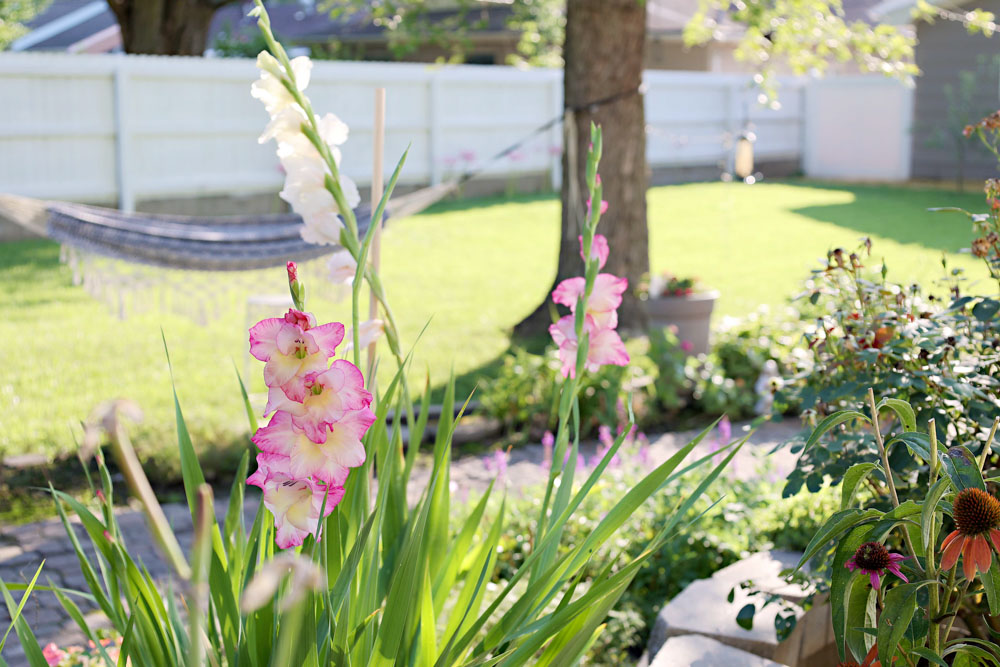
After I filmed and took these photos, some other shades of pink and peach bloomed too and I was pleased with the color mix that I planted.


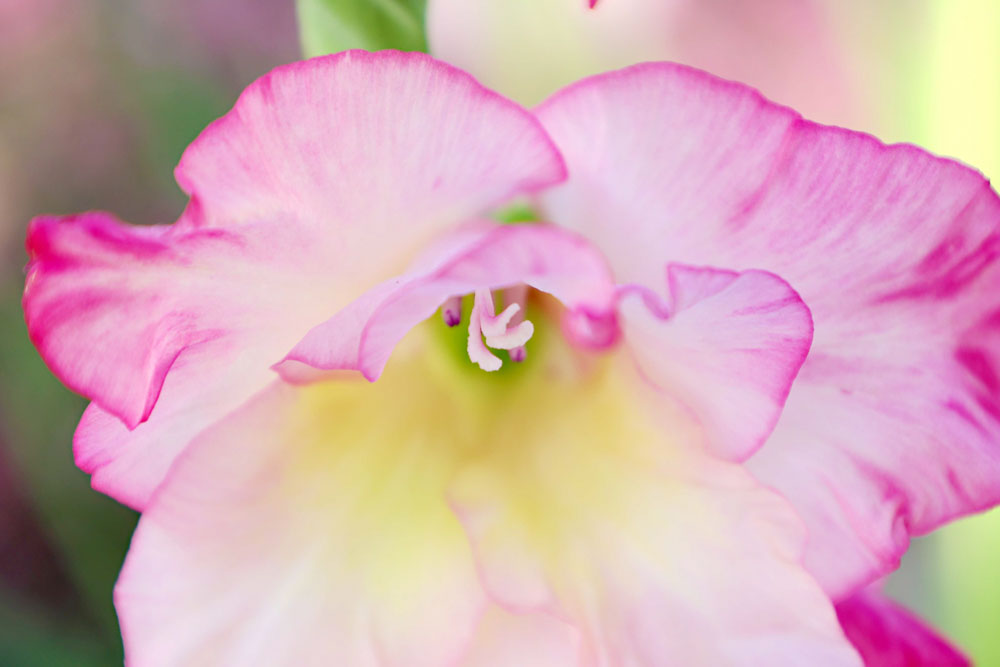
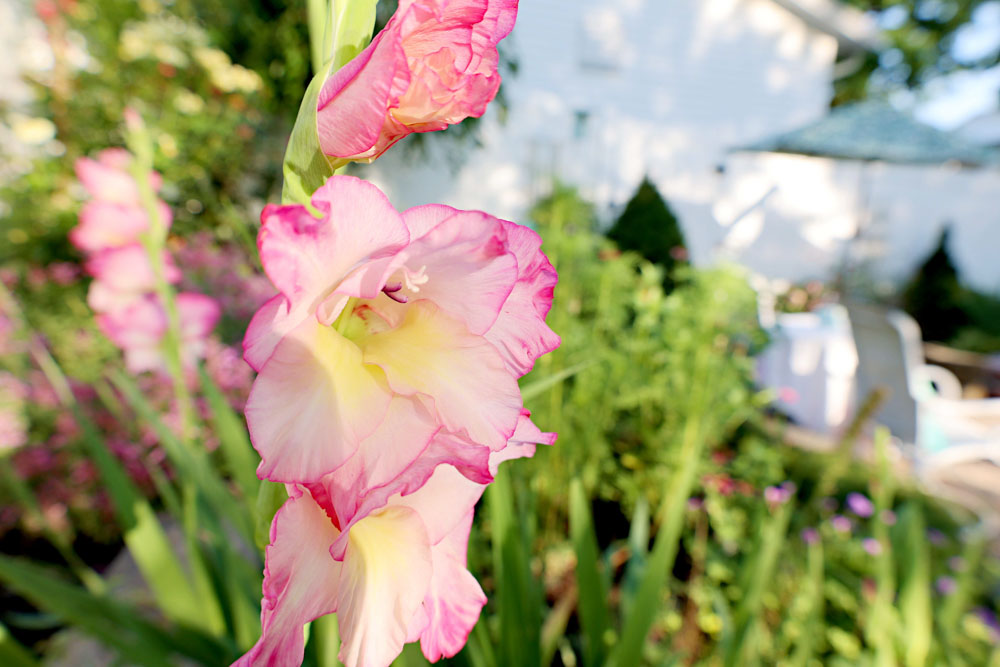

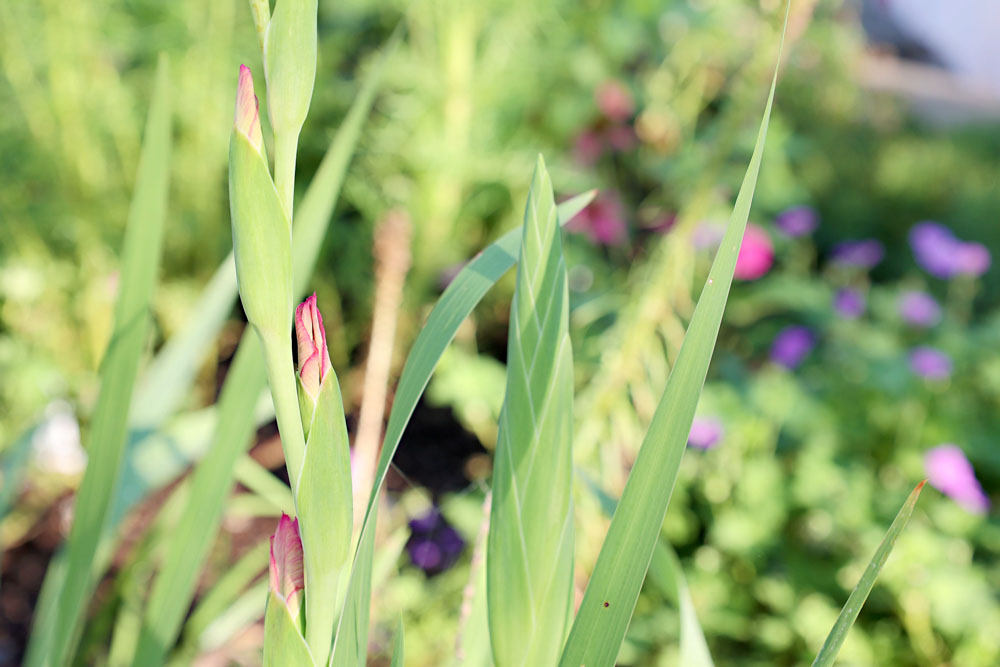
This photo shows the stages of blooms, with the beginning on the right and the next on the left, before reaching the blooms in the other photos.
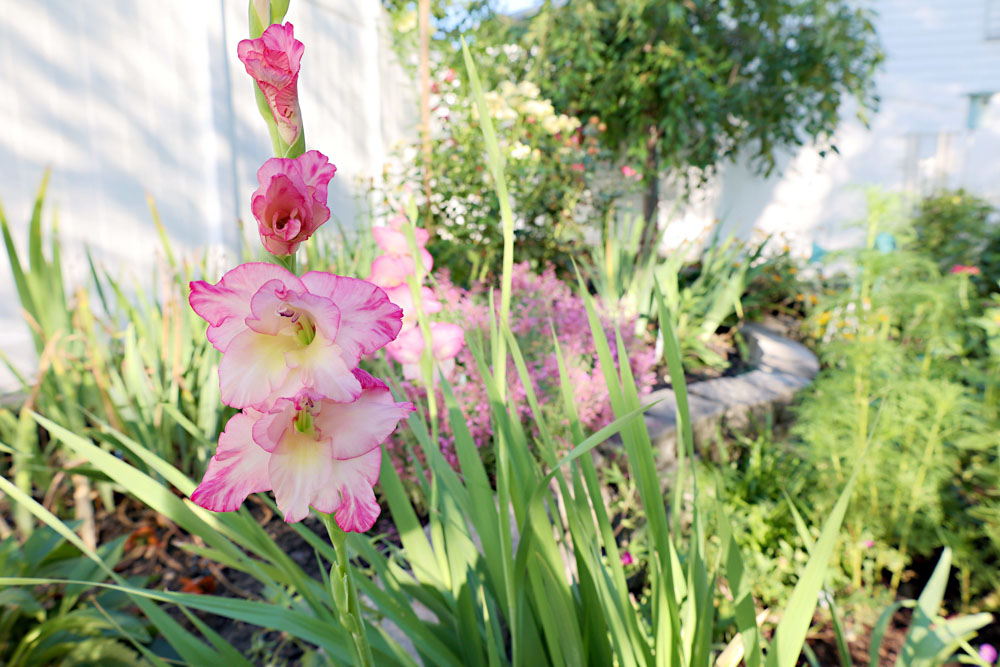


2023

2017


2012

2001
